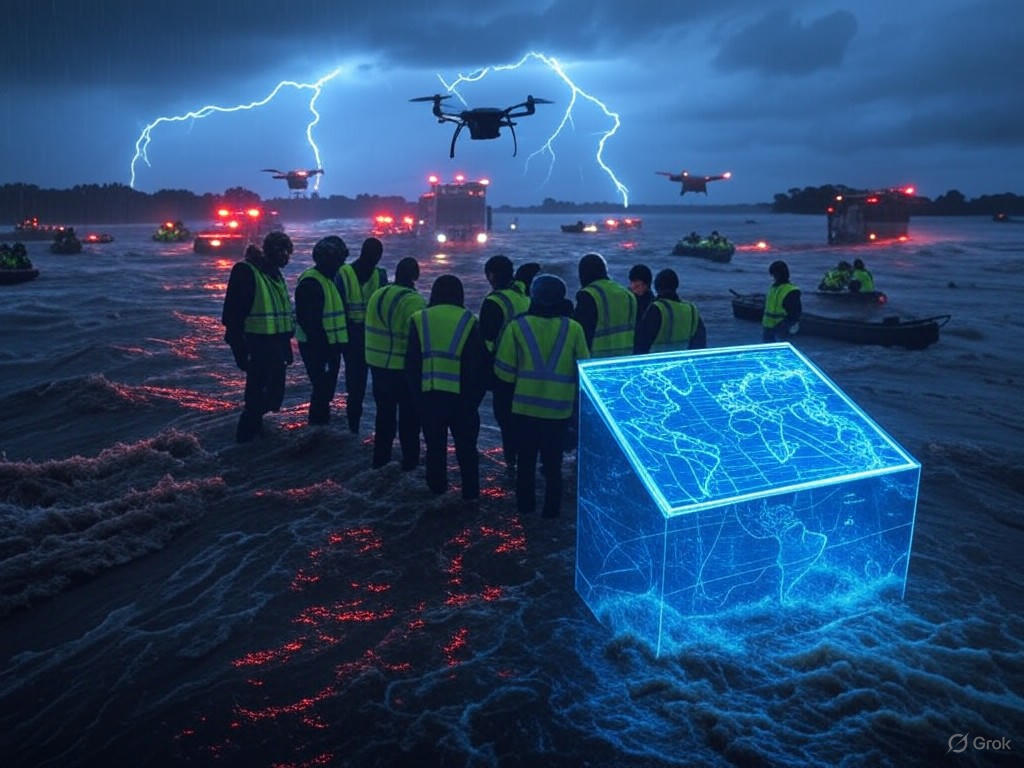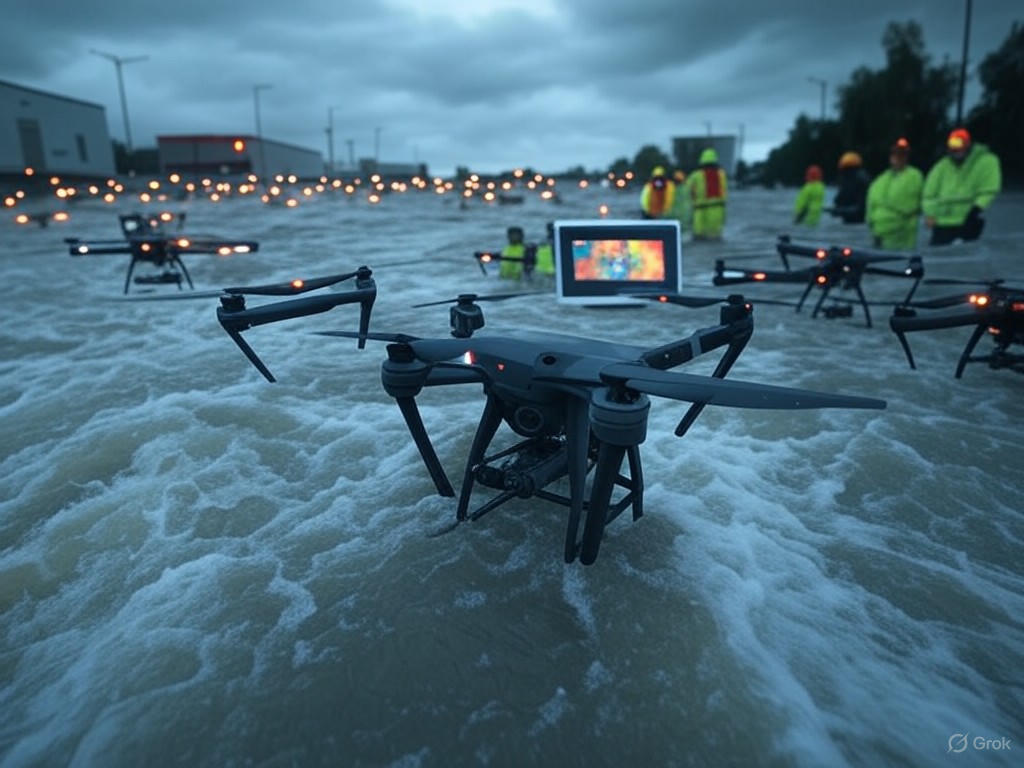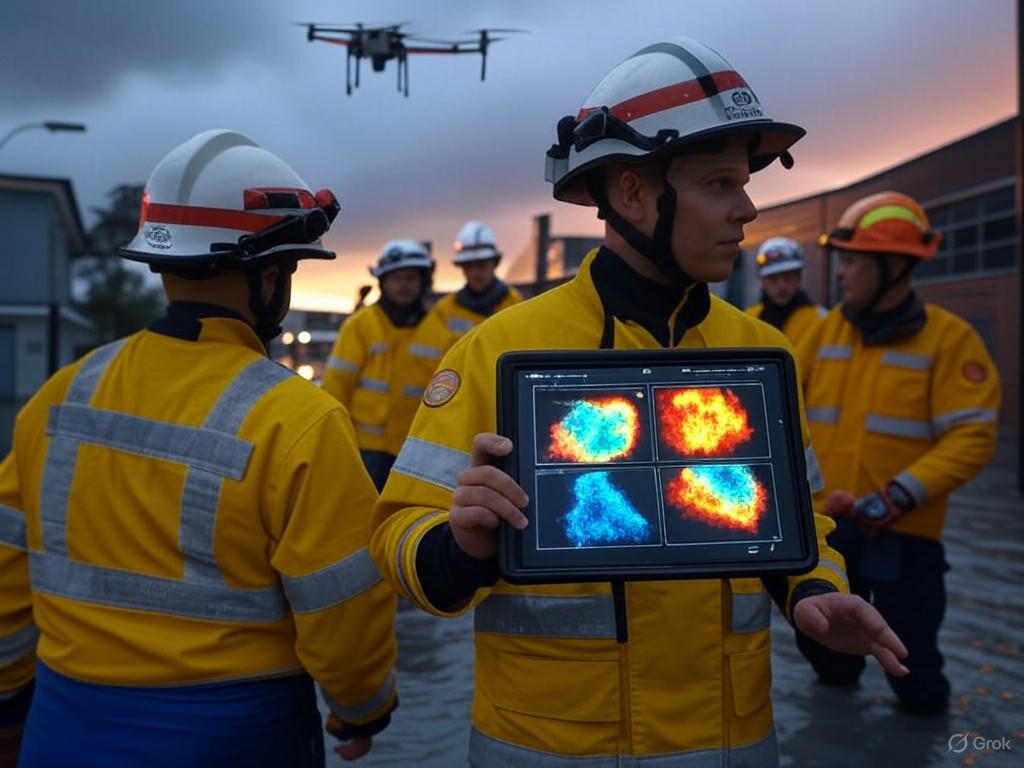AI for Disaster Response: Saving Lives
In an age where the forces of nature remind us of our fragility, one might be forgiven for despairing at the whims of wind and water. Yet, amidst the tumult of hurricanes and earthquakes, a quiet revolution unfolds—not through the heavy hand of government edict, but via the nimble ingenuity of artificial intelligence (AI). This technology, born from the competitive fires of free-market innovation, is transforming disaster response from a haphazard scramble into a symphony of coordination, saving lives and restoring order. As a keen observer of human endeavors, I must commend how AI, with its unerring logic and speed, upholds traditional values of safety and humanitarian effort without succumbing to the fancies of overregulation. Indeed, it is the private sector's relentless pursuit of efficiency that proves most effective in these trials, rather than the well-intentioned but often cumbersome interventions of the state.
The Dawn of Digital Coordination in Chaos
Picture, if you will, the scene of a raging flood: families clinging to rooftops, rescuers navigating treacherous waters, and communication lines in disarray. Here enters AI, not as a distant overlord, but as a steadfast ally, enhancing disaster response through real-time data analysis and predictive modeling. Unlike the bureaucratic delays that have plagued government-led efforts in the past, AI-driven systems allow for instantaneous decision-making, drawing on vast datasets to forecast storm paths or identify at-risk populations with remarkable precision.
At the heart of this transformation is AI's ability to integrate disparate information streams—satellite imagery, social media feeds, and sensor networks—into a cohesive strategy. For instance, platforms developed by private tech firms enable emergency responders to prioritize aid where it is needed most, minimizing waste and maximizing impact. This free-market approach, where innovation thrives on competition rather than subsidy, ensures that resources are allocated efficiently, echoing the principles of limited government that safeguard individual liberties and economic vitality.
Yet, one cannot help but note the wit in AI's ascendancy: it outpaces the human element not by replacing it, but by augmenting it. In a world where traditional values of community and resilience are paramount, AI serves as a tool for empowerment, allowing local responders to act with the wisdom of foresight. As IEEE Spectrum aptly observes, "AI's role in emergencies is less about automation and more about amplification," highlighting how private-sector advancements are quietly revolutionizing global safety protocols.

An AI interface displaying real-time flood mapping and resource allocation, guiding rescuers to stranded individuals during a simulated hurricane response.
Analyzing AI's Strategic Edge in Humanitarian Crises
Delving deeper, the analysis of AI's contributions reveals a landscape where technology intersects with human necessity in profoundly practical ways. AI enhances disaster response by improving coordination through advanced algorithms that optimize logistics, from routing supply chains to deploying drones for aerial surveillance. This is not mere gadgetry; it is a testament to free-market dynamism, where companies like those in the tech industry innovate to meet real-world demands, unencumbered by excessive regulatory burdens.
Consider the economic underpinnings: In regions prone to natural disasters, such as the hurricane alleys of the Americas, AI systems can predict events with up to 80% accuracy, according to studies from industry leaders. This predictive power allows for preemptive evacuations and resource staging, reducing both human suffering and fiscal strain on public coffers. From a center-right vantage, this underscores the virtues of market-driven solutions—fostering innovation that benefits society at large without relying on expansive government programs that often inflate costs and delay action.
Of course, no panacea is without its caveats. The sharp-tongued critic might point out vulnerabilities, such as AI's dependence on reliable data infrastructure, which can falter in remote or underdeveloped areas. Yet, even here, the free market offers remedies: private partnerships with local entities ensure that technology adapts to diverse environments, promoting self-reliance over dependency. As The Wall Street Journal reports, "Emerging AI tools are not only saving lives but also cutting response times by half, proving that competitive innovation outperforms centralized planning."
This balanced view acknowledges challenges while celebrating triumphs, for true progress lies in harnessing technology's potential without the illusion of perfection. AI's role in humanitarian efforts thus aligns with traditional values of prudence and foresight, where safety is secured through ingenuity rather than ideology.

A drone equipped with AI algorithms scanning for survivors in earthquake debris, demonstrating how technology enhances human-led search efforts with precision and speed.
Evidence of Lives Saved and Lessons Learned
The evidence for AI's impact is as compelling as it is quantifiable. Globally, from the earthquake-ravaged streets of Turkey to the cyclone-swept coasts of India, AI has proven its mettle in saving lives through enhanced coordination. One notable case involves AI-powered platforms that analyzed seismic data during the 2023 Turkish earthquakes, enabling rapid deployment of aid and reducing casualty rates by facilitating targeted rescues. Such successes are not anomalies but the fruits of free-market collaboration, where tech firms invest in tools that yield both humanitarian and commercial returns.
Data from authoritative sources bolsters this narrative. A report by ReliefWeb, affiliated with the United Nations but drawing on independent analyses, indicates that AI integration in disaster management has led to a 30% improvement in response efficiency over the past five years. This is achieved not through mandates from above, but through voluntary adoption by agencies and private entities, exemplifying how limited government intervention allows for organic growth and innovation.
Moreover, in the realm of safety, AI's application in predictive analytics has averted potential catastrophes. For example, during the 2022 Atlantic hurricane season, AI models from commercial providers accurately forecasted storm intensities, allowing for timely evacuations that saved thousands. As MIT Technology Review notes, "The fusion of AI and disaster response represents a paradigm shift, where market-led advancements prioritize human safety without the pitfalls of overregulation."
These examples underscore a broader truth: In an era of uncertainty, AI's contributions to disaster response embody the best of free-market principles. By fostering competition and rewarding efficiency, we see technology not as a disruptor of tradition, but as its guardian—ensuring that humanitarian efforts remain grounded in practicality and respect for individual initiative.
A Call for Prudent Progress
In conclusion, the story of AI in disaster response is one of triumph over turmoil, where technology's cold calculus warms the human heart by preserving lives and restoring communities. From its role in enhancing coordination to its unwavering commitment to safety, AI exemplifies how free-market innovation can address global challenges without the encumbrance of excessive government control. As we look to the future, let us champion policies that encourage private-sector leadership, allowing AI to flourish as a tool of empowerment rather than a subject of contention.
Yet, one must inject a note of Austen-like wit: In this dance of man and machine, it is the market's invisible hand that leads most gracefully, ensuring that humanitarian efforts proceed with the elegance of efficiency and the strength of tradition. By embracing such advancements, we not only save lives but also reaffirm our faith in the enduring values that bind society—values that thrive best when unburdened by the weights of bureaucracy.
Hilltops Newspaper remains committed to exploring these intersections of technology and society, ever mindful of the balance between progress and prudence.

